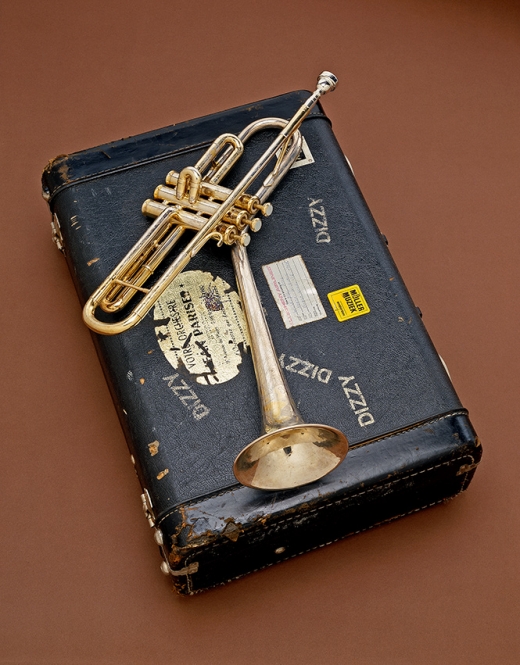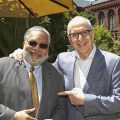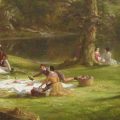Everything Under the Sun
![Staff of Smithsonian Institution pose spelling out SMITHSONIAN with a half-sunburst pattern at the 2015 Smithsonian Folklife Festival, Washington, D.C., June 30, 2015. Composite panoramic photograph with full sky area by Smithsonian National Air and Space Museum Photographer Dane Penland. [SmithsonianStaffPhoto6-30-2015-Pan5 wide-2BEST-FullSky] [NASM2015-04136]](https://torch.si.edu/wp-content/uploads/2015/07/Panorama1-700x267.jpg)
Smithsonian staff spell out SMITHSONIAN with a half-sunburst pattern at the 2015 Smithsonian Folklife Festival, Washington, D.C., June 30, 2015. (Composite panoramic photograph by Dane Penland)
What a welcome whirlwind of activity this first month on the job has been. I began with taking part in the sunburst photo at the staff picnic where Robin and I met many of you. Four days later I was at my second picnic, standing on a beautiful terrace at the National Museum of American History for the Fourth of July festivities. Looking out from that vantage point across the National Mall, I thought for the umpteenth time, “What a great job!” Many thanks to everyone who has welcomed Robin and me so warmly.
Since then I have visited numerous Smithsonian museums and galleries, held my first all-staff meeting, visited Capitol Hill multiple times, and worked with our colleagues on the National Museum of African Art’s Conversations exhibition issue. I supported keeping the exhibition open because as a creative institution, taking risks will mean encountering controversy. But we will work through the ongoing issues together because what we do is vitally important to the country, especially now.
As a friend and long-time Washingtonian correctly pointed out before I joined the family, “the Smithsonian is everything under the sun.” That is why I am so thrilled about the opportunity to work with all of you. I am here to support you and all the great work you do in history, art, science, culture, education, and outreach. So far, my biggest surprise is the scope of the “increase” part of our “increase and diffusion of knowledge” mission. I am incredibly impressed by the world-class scholarly research that underpins our work. We are making new discoveries all the time. I will be your biggest supporter in making this known to more people across the country and around the world. Our convening power—our impressive ability to bring experts together—will help us apply thought leadership to face our big shared challenges and tackle them together. What you do is transformative and magical. I have seen this at my initial visits to several of our museums.

Places of Invention exhibit entrance in the Jerome and Dorothy Lemelson Hall of Invention. Locations featured in the exhibit include the Bronx, home of hip-hop, and Silicon Valley, birthplace of the personal computer. (Photo courtesy of the National Museum of American History)
In July, I attended a number of events at the National Museum of American History, including the Value of Money exhibition, with its impressive 1.5-ton bank-vault door in the newly reopened innovation-themed first floor of the museum’s west wing. The exhibitions, galleries, and programs here remind us of the importance of the innovative spirit in driving the nation forward. The American Enterprise exhibition tells the story of the dynamic forces that have shaped our economy and continue to do so. Spark!Lab is a creative playground of invention and collaboration for kids of all ages in the Lemelson Center for the Study of Invention and Innovation. I could lose myself for hours in the Places of Invention exhibition. It features areas of the country that have evolved into hubs of innovation and invention, including “Medical Alley” in St. Paul, Minnesota, a corridor of revolutionary cardiac medicine that started with the first portable battery-powered pacemaker.
Renovations on the museum’s west wing are still underway, with the second floor focusing on our nation’s diversity set to open in 2017, and the third floor devoted to American culture scheduled for 2018. It will feature the Hall of Music, a new home to the Smithsonian Chamber Music Society, the Smithsonian Jazz Masterworks Orchestra, and other performances of American music. I was thrilled to learn of the music represented here and throughout the Smithsonian—Dizzy Gillespie’s trumpet, the sheet music for Duke Ellington’s Take the “A” Train, and Alexander Graham Bell’s early sound recordings, among others. So it is fitting that some of our performing musicians will have a new permanent home in the National Museum of American History. We should all go see them perform (Smithsonian Associates, now celebrating its 50th anniversary, has a large selection of performances, programs, classes, camps, and tours.)

Dizzy Gillespie’s B-flat trumpet, 1972.
In the 1940s, Gillespie, renowned for his harmonic complexity and scat singing, became a major figure in developing the modern jazz style known as bebop. Gillespie pushed the technical virtuosity of the trumpet, wrote influential compositions, helped introduce Afro-Cuban rhythms into jazz and through his showmanship helped spread the popularity of bebop. (Photo courtesy of the National Museum of American History)
These next days and months, I will be walking around to soak up the “sun” and learn as much about our Institution and all of you as I can. I am particularly excited to learn more about our incredibly diverse and dynamic art museums. If you see me out and about on the National Mall or in one of your museums, I urge you to say “hi” and tell me your thoughts on the direction of the Smithsonian. I invite your advice on how best to take all of your knowledge and share it with Americans and people around the world. And if there is a way you think we can be a better, more inclusive, more responsive Smithsonian, please do not hesitate to send me a brief message at SkortonD@si.edu. I look forward to hearing from you.
Posted: 31 July 2015
-
Categories:
American History Museum , Art and Design , From the Secretary , History and Culture , News & Announcements







